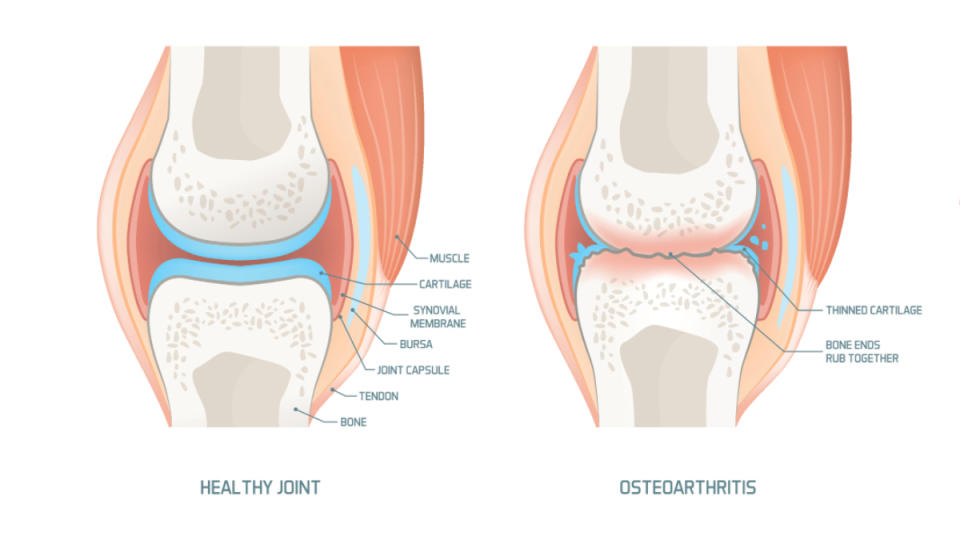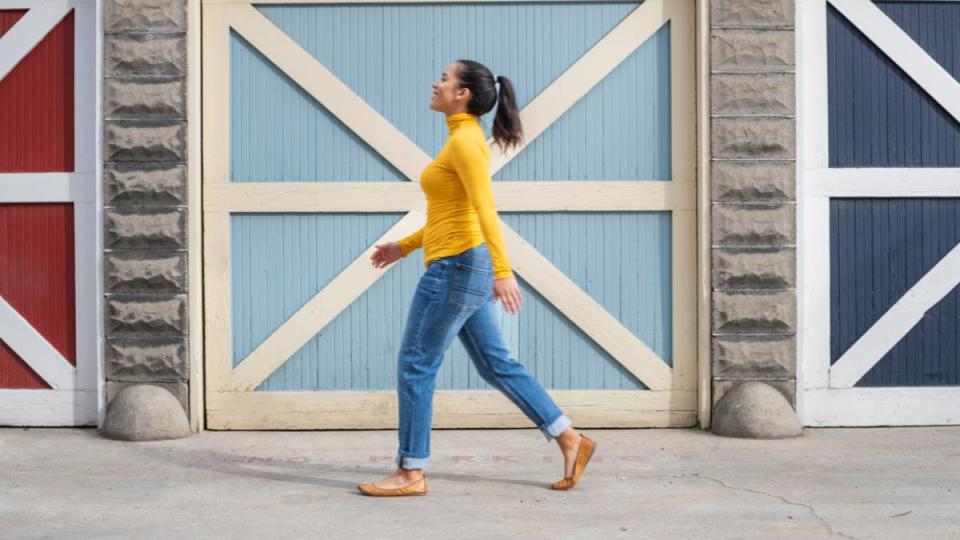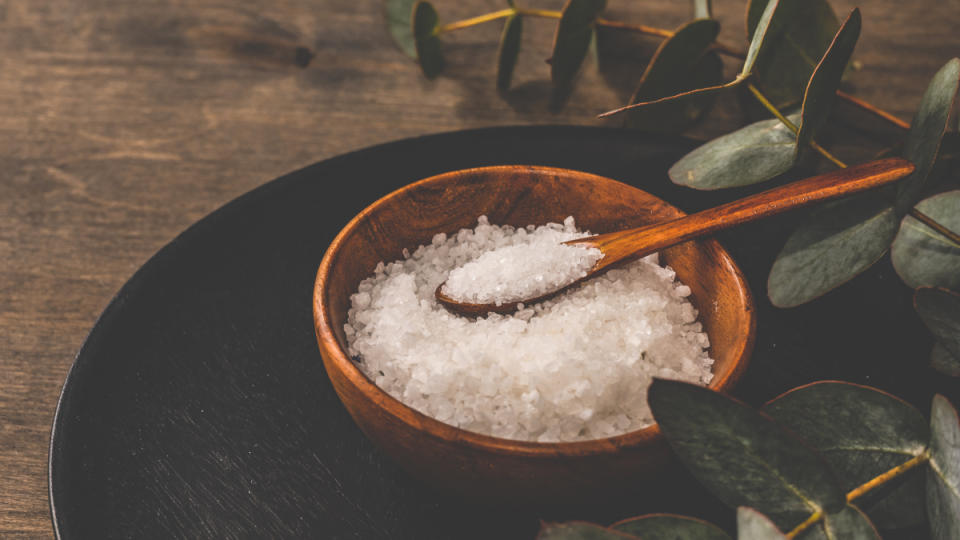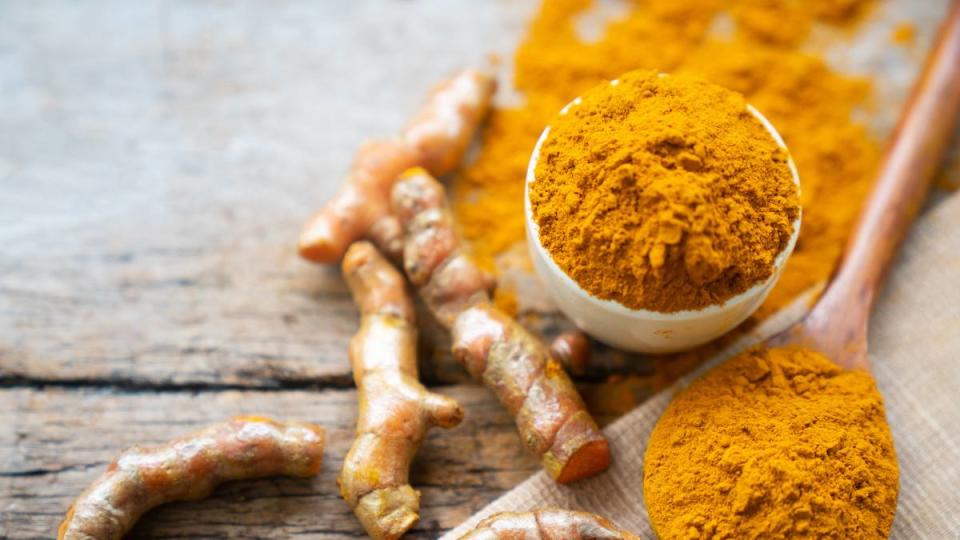Knee Pain When Bending? These 8 MD-Approved Tricks Help End the Ache Naturally
Plagued by dull creaking and stiffness in your knees every time you bend down or climb the stairs? Chances are you've got knee osteoarthritis, a top cause of knee pain when bending. And you're not alone. "Some studies show that 1 in 4 individuals over the age of 45 have some level of arthritic changes in their knee already," says James Chen, MD, an orthopedic surgeon at DISC Sports & Spine Center in Newport Beach, CA, and a member of the California Orthopedic Association.
The good news is that mild achiness is often easy to manage naturally right at home. Here, experts reveal their top tips for fighting the most common cause of age-related knee pain, plus what to do if you think your knee pain is caused by another problem, like an injury.
Top causes of knee pain in women over 50
Pain when bending your knee can have a number of possible culprits. But the most common cause among women over 50 is knee osteoarthritis. This is typically caused by the cartilage (the connective tissue that cushions your joints) in your knee joints naturally wearing down over time. Your knee bones rub directly on each other when the cartilage wears away, resulting in painful friction, says George Eldayrie, MD, a board-certified sports medicine doctor with Orlando Health Jewett Orthopedic Institute in Orlando, FL. "It's like the treads on your tires. If you drive the car for long enough, the tires will start to wear down," he explains.
In addition to pain when bending, your knee might feel stiff (especially when you first get up) and make a cracking or grinding noise when you move it. You might also see visible swelling or puffiness caused by fluid buildup around the knee joint, especially after you've been active or at the end of the day after being on your feet, notes Dr. Chen.

Related: 13 Best Hand Massagers for Arthritis, Carpal Tunnel, and Stiff Joints
Injuries that can cause knee pain when bending
Injuries like tendonitis (inflamed tendons), bursitis (inflammation of the fluid-filled sacks that cushion joints) or a Baker's cyst (a fluid-filled cyst) can also cause knee pain when bending. "The knee is a relatively unstable joint, and there are a lot of muscles and ligaments responsible for the motions when we perform normal activities [like bending, climbing, or walking]. So there are a lot of things that can get hurt," Dr. Chen says.
That said, it can be hard to figure out on your own which injury might be causing your knee pain. It's a good idea to let your doctor know if you're having persistent discomfort. They can perform a physical exam and imaging tests (like an X-ray or MRI) to determine where your knee is injured and how bad the damage is, plus the best way to help you feel better.
How to soothe knee pain when bending
Mild knee osteoarthritis or minor injuries can usually be managed right at home. "If you're still able to do your daily activities and the pain is just a nuisance, I'd start with conservative measures," Dr. Eldayrie recommends. Here, the best home remedies.
1. Take a lunchtime stroll
You might think that a walk will make your knee pain worse. But adults with knee osteoarthritis who walk regularly are 40% less likely to develop new or worsening knee pain compared to those who rarely walk, found a study in Arthritis & Rheumatology.
"When you walk, you stimulate the muscles and tissues of the knee joint," says Dr. Eldayrie. "That gets things stronger and more lubricated. It gets rid of stiffness and improves flexibility." He tells his patients to aim for 150 minutes of walking each week. That's about 20 minutes every day — short enough to sneak in during a midday break! (Achy back, too? Click through to see how to dodge lower back pain when walking.)

2. Loosen your quads
A relaxing stretch doesn't just feel good, it can also help quash knee pain and stiffness. Stretching your quadriceps (the front thigh muscles directly above your knees) can ease pain when bending your knee. "Tight quads put some compressive force on the kneecaps, which people feel with stairs, squatting and kneeling," says Shannon Leggett, PT, a physical therapist based in New York City.
A simple standing stretch is an easy way to loosen up your quads, and you can do it almost anywhere. Standing next to a wall or sturdy chair, bend your knee to bring your heel towards your buttocks while grabbing your ankle with your hand. (You can place your free hand on the wall for support.) Hold for 30 seconds and repeat three times per day, she recommends. For a visual guide, check out the quick video below:
3. Strike a (bridge) pose
While loosening up tight quads is a great place to start when it comes to knee pain, strengthening the muscles that support your knees can help, too. Leggett is a fan of bridges, an exercise that targets your gluteus or butt muscles. "Weakness in the glutes often makes the quads have to do all the work, which makes them tight and ends up putting stress on the knees," she explains.
To do a bridge pose, start by lying on your back with your knees bent and your feet flat on the floor (keep them in line with your hips). Then press your feet into the floor and slowly lift your hips up high enough so your knees, hips, and shoulders form a diagonal line. Hold for a moment, then slowly lower down. Do 3 sets of 10 reps, 3 times per week. For a visual guide, check out the quick video below:
4. Go cold, then hot
Smoothing on creams or balms like IcyHot (Buy on Amazon, $6.98) are one of Dr. Eldayrie's go-to remedies for knee pain. They deliver an instant cool sensation followed by warmth. "This can distract you from the pain," he says, and may help reduce inflammation. Massage a generous amount directly into the skin around your knee up to 4 times per day.
5. Soak in an Epsom salt bath
A warm bath can soothe your achy knees, but adding a sprinkle of Epsom salt can help them feel even better, suggests a study in the International Journal of Health Sciences and Research. "We don't really know how it works, but the theory is that the electrolytes in the salt may help reduce pain," Dr. Eldayrie explains. Adding about 1 ? cups of Epsom salt to a hot bath and soaking for 15 to 20 minutes should do the trick. One to try: Epsoak Pure Epsom Salt (Buy on Amazon, $14.24). (Click through to see more brilliant uses for epsom salts.)

6. Supplement with fish oil
Omega-3 capsules, which are often made from fish oil, are one of Dr. Chen's favorite natural anti-inflammatories for achy knees. In fact, adults who took 2,400 mg of fish oil daily for 16 weeks cut knee osteoarthritis pain up to 40%, found a study in Rheumatology Advances in Practice. One to try: Nordic Naturals Ultimate Omega Soft Gels (Buy on Amazon, $25.99).
7. Consider curcumin
Curcumin, the active compound in the spice turmeric, is another natural supplement option that may help ease inflammation in painful, arthritic knees, Dr. Chen says. Research in the journal Trials suggests that it may even work as well as the prescription pain reliever diclofenac when you take 500 mg of curcumin three times a day for one month. One to try: NatureMade Turmeric Curcumin (Buy on Amazon, $27.98). (Click through to see more health benefits of turmeric for women.)

8. Go for garlic
Like fish oil and curcumin, garlic boasts potent anti-inflammatory properties that have been shown to nix knee discomfort. Women with knee osteoarthritis who took 1,000 mg of garlic extract daily for 12 weeks reduced their knee pain and slashed stiffness, found a trial in the International Journal of Clinical Practice. Eating a clove or two of fresh garlic daily can help, too, but a more concentrated dose in supplement form can deliver bigger benefits faster. One to try: Nature's Bounty Garlic Extract (Buy on Amazon, $17.99).
For more ways to soothe sore joints from head to toe:
Research: Castor Oil Packs Proven to Relieve Constipation, Menstrual Cramps & Joint Pain
Top of Foot Pain Is The Foot Problem No One Talks About — Doctors Reveal How to Outsmart It
This content is not a substitute for professional medical advice or diagnosis. Always consult your physician before pursuing any treatment plan.
Woman's World aims to feature only the best products and services. We update when possible, but deals expire and prices can change. If you buy something via one of our links, we may earn a commission. Questions? Reach us at [email protected].
Solve the daily Crossword

